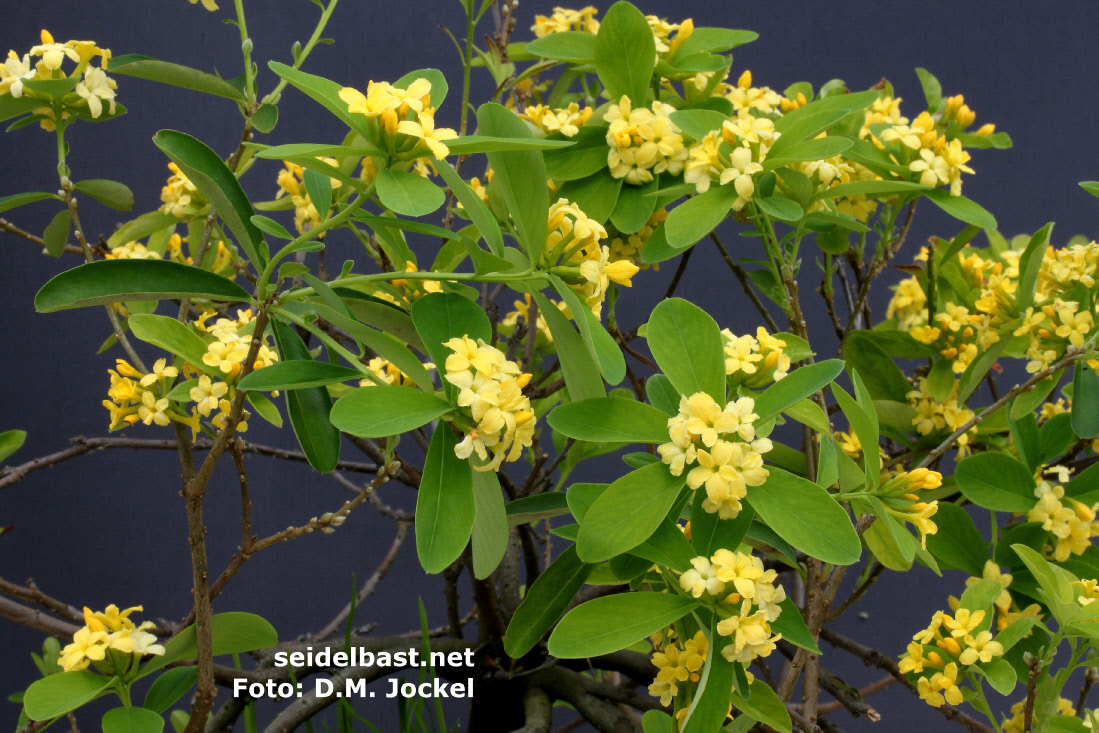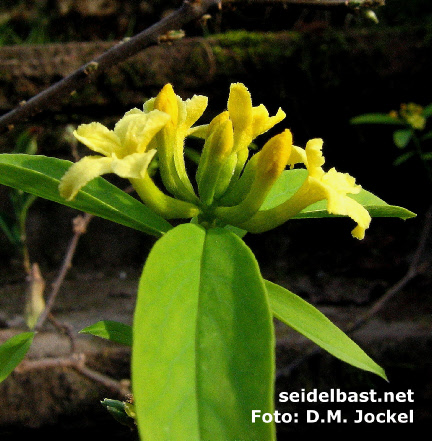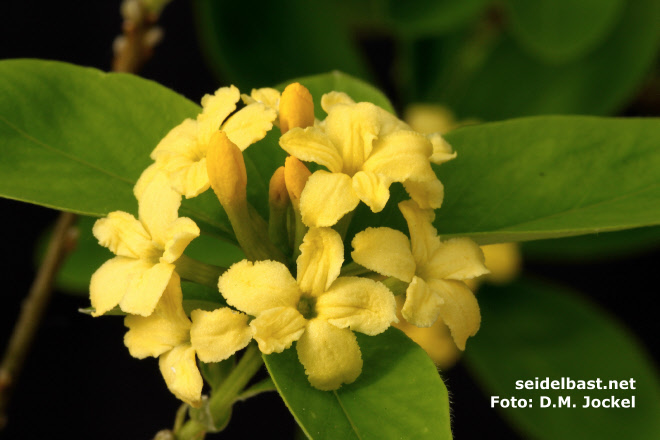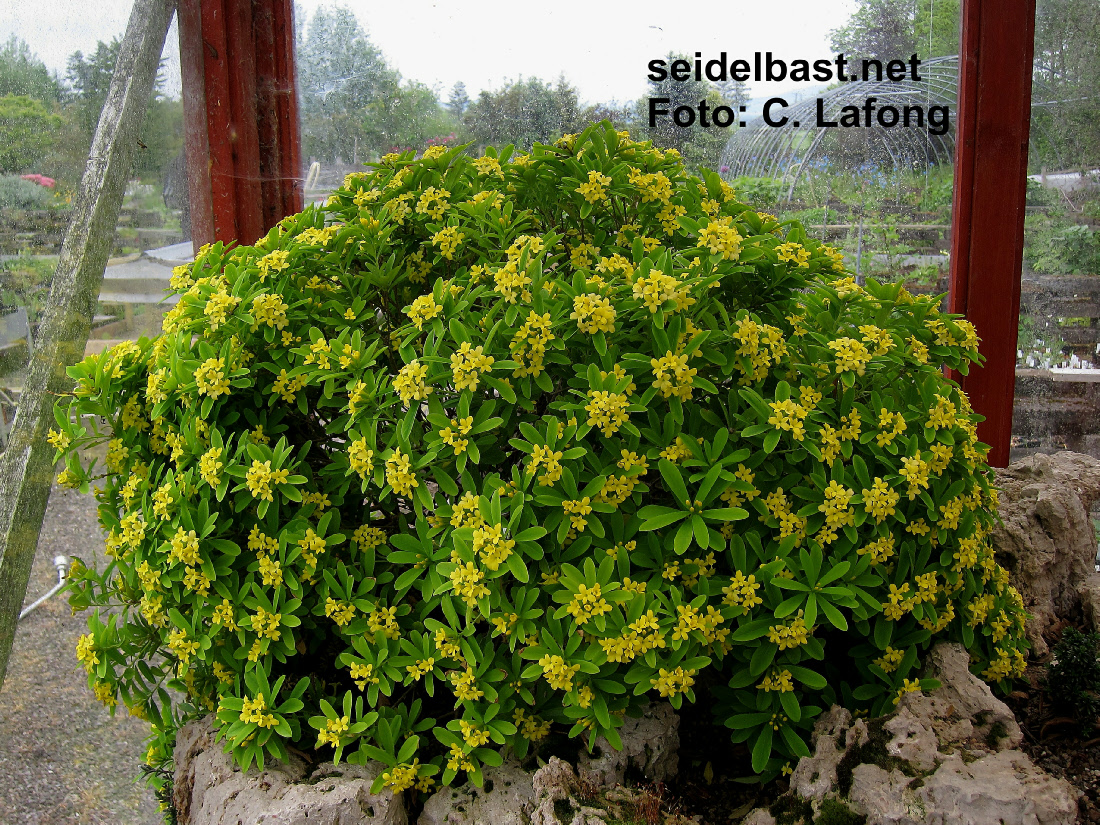

seidelbast.net
Plants, Pictures, and Information
- all about the Genus Daphne

Daphne gemmata E. Pritzel (1900) also known as Wikstroemia gemmata
this Daphne species grows in Sichuan and Yunnan, China / ca. 0,5 m high, often less / ascending growth / no fragrance / fruits white / hardiness outside is given with protection - deciduous / flowers permanently through the growing season
It is said that Daphne gemmata grows on sunny cliffs. In my experience is a half-shadowed place more convenient for this species. Prefers a neutral soil with less lime.
The flower colour of Daphne gemmata changes from intensive yellow into pale yellow on an inflorescence during flowering.
At a certain time only one blossom with a special intensity of the yellow colour is fertile. Which bloom, the bumble bees know best.
A selected clone of this species is Daphne gemmata ‘Sceringa’.
Further five lobed daphne species are new in cultivation: Daphne modesta and Daphne rosmarinifolia
More information that the number of lobes is irrelevant of belonging to the genus Daphne or Wikstroemia you find on the botany page -flower structure of Daphnes



Above left:
Daphne gemmata, close-up of inflorescence
Above right:
typical curved calyx-tubes of Daphne gemmata
Below:
Daphne gemmata flowering shrub

Below:
Wonderful, rich flowering shrub of Daphne gemmata ‘Sceringa’ growing in the greenhouse of Ian Christie’s nursery